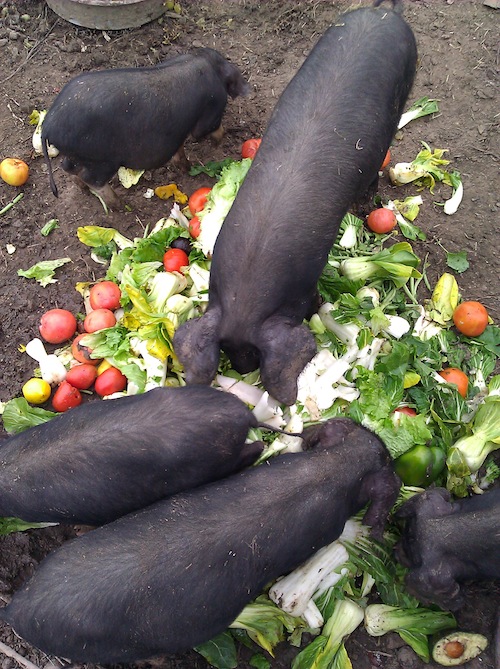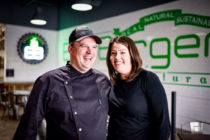Fat, slow, loud and smelly … add voracious appetites. We are referring to the herd of multi-colored pigs being corralled to a grassy field at feeding time by Felix Florez, the sommelier at Brennan’s. (Yes, you read that right.) But these aren’t just any pigs being fattened up to become the next luscious pork belly starter or mesquite grilled pork chop at, say, Catalan restaurant. We caught up with this busy young somm/rancher to chat about what inspired him to start raising pigs for his new family-operated company, Black Hill Ranch in Cypress.
So, what’s a nice sommelier like you doing in a place like this?
I grew up in West Texas, and my family has been in cattle ranching for decades. Plus I’ve always been an outdoorsman – hunted pigs, deer and rabbits – and had to butcher my catch. I got tired of watching chefs open packages of pork from Australia and other parts of the world knowing that quality pork could be raised locally. Seventy-five percent of restaurants in the U.S. still buy pen-confined commercial pork. My goal is to illuminate the various pig breeds and produce natural, high-quality pork. I figured I could give this a go during the day and continue being a sommelier at night for Brennan’s.
What’s hot in the pork culinary world, and what makes your pigs unique?
First it was the sweet, juicy Berkshire, which we raise. Then the buzz from New York to Houston became Mangalitsa (an imported lard-type pig) in Texas. We raise an extremely rare pig here called the Meishan (a Chinese lard-type pig), which tastes just as beautiful as Mangalitsa pork. I have the only four in Texas and there are fewer than 100 in the entire country. I also raise Duroc, which are known for a darker richer meat, Hereford, Mulefoot, Red Wattle and Ossabaw Island hogs derived from Georgia.
What’s the flavor difference between commercially produced pork and these specialty raised meats?
It’s like night and day. You are what you eat, and if the majority of consumers were aware of the commercially raised pig’s diet and the way the pigs lived, they would be shocked. It costs more to feed pigs a natural diet of barley, grass, fruit, vegetables, different grains and red wine (yep!), as opposed to stuffing them with corn. We use the Kurobuta approach – similar to the Japanese who for years have been feeding their pigs beer and a healthy diet. Our pasture-raised, hormone-free heritage pork is tremendously tender and robust whereas commercially produced pork can be very dry and lacking flavor.
Where can we buy your locally raised pork in Houston?
Brennan’s, Catalan, Revival Market, Haven, Benjy’s, Cafe Bello, Canopy, Voice and Kraftsmen, so far. I’ve been talking to lots of other chefs who are also ready to come on board. They are interested in buying either the whole animal to butcher themselves or the shoulder, belly, leg or chops.
Pig out!









Follow Us